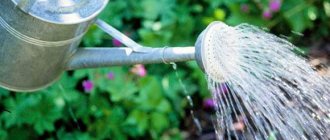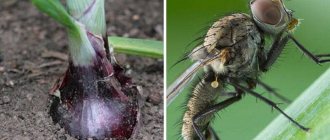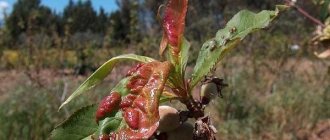Almost every gardener is faced with the phenomenon of pests. Orchids, unfortunately, are no exception, so the problem of pests of phalaenopsis orchids is familiar to orchid growers firsthand. Treatment of plants can be associated with certain difficulties, since almost all types of insects parasitizing plants reproduce quite quickly and it is very difficult to completely destroy their population. Let's look at the most common types of insects and talk about how you can effectively fight them. Photos of orchid pests will help you recognize your opponents by sight.
How to detect pests
Pests of phalaenopsis orchids appear more often in the summer, but can cause serious damage to plants in winter. The most unpleasant of them are:
- Thrips.
- Shield.
- Spider mite.
- Mealybug.
- Whitefly.
- Aphid.
- Nematodes.
- Fools.
- Snails and slugs.
The activity of each specified species has its own specific symptoms, but the difficulty lies in the fact that many of them are microscopic in size, hide in the axils of the leaves and lay their larvae there. Finding out what type of insects is attacking your plant is quite simple:
- Place a piece of apple or cucumber right in the pot overnight next to the plant, and in the morning you will see who came to eat.
- Another method allows you to identify pests living in the root system of the plant: a pot with an orchid is immersed in a container of water. The insects will emerge within a short period of time and can be seen.
The reason for the appearance of most types of insects is improper care. For example, thrips reproduce very actively in a hot environment with dry air; heat and humidity are ideal for whiteflies; slugs can be brought in with the substrate. But sometimes you can confuse the signs of pest infestation with certain diseases, such as anthracnose. This fungal infection spreads very quickly and sometimes phalaenopsis with low immunity dies very quickly. Therefore, be attentive to your tropical pet and carefully check the entire flower.
Means of struggle
Chemical and biological drugs
| Drug name | a brief description of | Mode of application |
| Aktara | This is an insecticide from the group of neonicotinoids, with a wide spectrum of effects. Effectively suppresses scale insects, false scale insects, mealybugs, whiteflies and other insects both when applied to the soil and when sprayed on the leaf. |
|
| Aktellik | Insectoacaricide of enteric contact action, effective against various types of mites and other flower pests (flower beetles, thrips, all types of aphids, whiteflies, scale insects, spider mites, fungus gnats, flies, etc.) | For orchids: the contents of the ampoule are 2 ml per 2 liters of water. Attention, the drug is very toxic. It is recommended to carry out the treatment in protection and in the open air. |
| Fitoverm | Biological insectoacaricide against mites, thrips, aphids and other orchid pests. Not compatible with other drugs. |
|
| Agravertine | Designed to combat a wide range of harmful insects:
It has a paralyzing effect on larvae and adult pests. | For indoor flowers, it is recommended to dilute 5 ml of the product in 2.5 liters of water. Using a sprayer, thoroughly moisten the upper and lower leaves, paying special attention to places where insects accumulate. |
| BI 58 | It is a systemic and contact insecticide. Its action is directed against sucking and gnawing parasites such as potato moths, various caterpillars, mole crickets, ticks and other insect pests. The active substance Dimethoate is an ester of phosphoric acid. | For spraying: 1 ml of the drug per 1 liter of water. |
Folk remedies
- Garlic tincture. Infuse 4-5 cloves of garlic in 0.5 liters of boiling water. The orchid is sprayed with a solution or only the leaves are wiped on both sides.
- Soap-alcohol solution. For 1 liter of soft water, 1 s. l. liquid soap and 2 tbsp. l. alcohol, strength 70°.
- An infusion of onion or garlic peels helps against most pests. Mix 100 grams of garlic peel in 10 liters of water and leave for 24 hours. To prepare onion infusion, you need 150 grams of onion peels.
- Soap solution. For 10-15 grams of liquid laundry soap per 1 liter of water.
- Herbal decoctions. Prepared by steaming a small amount of dry herb with 1 liter of liquid; after cooling, the decoction can be used.
Thrips
Thrips are small insects, 1-1.5 mm long and have two paired wings. The most common species of phalaenopsis is California thrips. They reproduce in an environment with dry and warm air, temperatures from 22 to 30 degrees. This species is dangerous because it carries some viruses, after which the plant may be doomed to death.
The following types of thrips also feed on phalaenopsis:
- Tobacco.
- American.
- Black.
Pests lay their larvae in plant tissue. They mainly reproduce in the axils of leaves. Already at the very initial stages of their development, young thrips can cause great harm to orchids. They feed on juices from the plant trunk, which quickly makes these tissues unsuitable for photosynthesis.
Treatment
You can treat an orchid for thrips in the following ways:
- The first thing to do is isolate the phalaenopsis from the rest of the collection.
- Next, take the orchid out of the pot and carefully wash it with soap and water under warm running water. The axils of the leaves, as well as hard-to-reach places under the neck, should be rinsed especially well.
- You can use sticky sheets.
- Among the chemicals, Aktara and Vermitek have proven themselves well.
Chemical treatments are carried out with a solution prepared according to the instructions, using the spraying method. After applying the drug, the flower must be sealed as tightly as possible in a plastic bag so that adult individuals do not move to a safe place. The bag is left for 12-24 hours, after which it is removed and the leaves are wiped with clean distilled water.
Important! For prevention, this procedure must be repeated after 14 days.
Shchitovka
The scale insect that attacks phalaenopsis is a rapidly reproducing species of parasite and it usually appears on weak plants that are overfed with nitrogen. An insect can be of various types:
- palm scale;
- soft false scale;
- hemispherical pseudoscutellum.
These insects reproduce sexually and asexually, depending on the species. Male individuals can move from plant to plant, female individuals stick to the leaves with the help of a proboscis, feed on its juices and lay up to 2000 eggs. After the death of the mother, the larvae quickly spread to other plants.
Important! It is not recommended to remove the shields manually, as this can contribute to a faster spread of the pest!
Treatment
Treatment of scale insects is quite complicated, but possible. The natural enemy of the scale insect is good lighting and high environmental humidity. Therefore, in order to avoid the spread of the parasite, you should not just isolate the phalaenopsis, but even better, place it in a greenhouse.
Experienced gardeners recommend keeping the orchid in a greenhouse for 2-3 days, until the adults die and the young ones crawl out from under the mother’s shield. Next, we take the orchid out of the greenhouse and rinse it well under warm, running water, thus washing away the young insects.
Among the folk methods, the method of treating leaves with garlic pulp, as well as a soap-alcohol solution, has proven itself well. However, here you should act as carefully as possible and apply these products exclusively to areas affected by the scale insect.
Chemical preparations for the treatment of scale insects have also proven themselves to be excellent:
- Contact insecticides: Permethrin.
- Intestinal: Aktara, Actellik, Arrivo.
- Systemic: Methylmercaptophos, Phosfamide.
Why might pests appear on an orchid?
There are many reasons for the appearance of insects that harm the orchid. The main ones are:
- the flower purchased was infected in the store;
- use of contaminated substrate;
- transfer of pests from a neighboring plant.
Important! In any of these cases, immediate measures must be taken to save the orchid.
Buying an already infected flower
Store orchids are not always kept in ideal conditions. In addition, a large accumulation of flowers in one place greatly increases the risk of disease or pests.
A healthy phalaenopsis can be distinguished by the following characteristics:
- leaves are bright green, elastic, dense, smooth;
- roots are green or golden, elastic, hard;
- It is desirable to have a young leaf in the rosette;
- flowers or buds are placed on a strong peduncle.
If the leaves are wrinkled, covered with a sticky white coating, their plates are dotted with spots and dots, then the orchid is infected. Limp, brown, moldy roots also indicate the presence of disease or pests. This type of phalaenopsis cannot be purchased.
Reference! Before purchasing, you should shake the flower pot. A healthy orchid is firmly anchored in the flowerpot by its roots. If the plant dangles in the container, such a purchase should be abandoned.
Pests in the substrate
Soil taken from a street flower garden is highly likely to be contaminated. You can also introduce pests into the soil by making your own substrate. It is enough for one of the necessary ingredients to be infected.
Reference! To protect the flower, it is recommended to buy ready-made substrate for orchids in specialized stores.
Transfer of insects from another plant
If they want to maintain the design of the room or in order to save space, some owners place flowers in one place too close to neighboring ones. This can be observed especially often on window sills. In this case, if one specimen is infected, there is a high probability of pests spreading to neighboring orchids.
Reference! Experienced gardeners recommend maintaining a distance of 25–50 cm between flower pots. The main criterion is that the plants should not touch each other with their leaves.
Ticks
A mite is a pest that lives in the substrate. The parasite can be of two types:
- spider mite;
- oribatid mite.
The most effective way to combat mites of any kind is to flush the plants. This is done by immersing the roots in water. You just need to wait until all the parasites emerge.
To prevent ticks, it is necessary to keep the substrate in the oven at a temperature of 150-180 degrees for 5-10 minutes.
Many people ask what to do if a cobweb appears on an orchid? Is this related to the activity of spider mites? In most cases, yes. Of course, it must be removed, since it contains tick larvae.
How to distinguish a disease from insect damage?
Even when all recommendations for maintenance and care are followed, the orchid may become depressed. By carefully examining the flower, you can determine what caused it:
- Yellow spots on the leaf or white dots – powdery mildew, rot, pests.
- Droopy foliage – aphids, mites, bacterial spot.
- Sticky (white) spots on leaves - aphids, bacterial spot, powdery mildew.
- Black, darkened leaves - rot, spider mites due to improper watering in cold weather.
- Soft, wrinkled or rotting foliage - pests, fusarium rot, bacterial spot.
- Leaves turn red or curl due to pests and rot
- The edges turn black – bacterial spotting.
- Mold or silvery plaque – pests, gray rot, powdery mildew.
- White bugs or fungus on the leaves are pests due to frequent watering or too high humidity.
Mealybug
The mealybug is a rather unpleasant pest because it feeds on plant juices and especially likes healthy and blooming orchids. Another name for this parasite is feltworm.
By injecting its toxins into the phalaenopsis tissue, the mealybug slows down the orchid’s metabolism, thereby prolonging its “meal”. It is quite difficult to fight it, but at the beginning of infection it is possible to do without insecticides.
The scale insect does not survive well at high temperatures of +30+35 degrees, but this is quite difficult to achieve naturally, and the use of heating devices can cause burns. A good result can be achieved using a hot shower (40-50 degrees.)
Of the chemicals that have proven themselves well:
- Enteric-contact insecticides: Vermitek, Fitoverm.
- Aktara is an intestinal preparation that works for almost all groups of pests.
- Calypso.
- Actellik can be used in particularly advanced cases.
You can start treatments with weaker ones - Vermitek or Fitoverm. If the result is insufficient, ineffective drugs are discontinued.
Whitefly
Whitefly is a pest that attacks not only indoor flowers, but also garden plants. Many farmers are faced with the activity of this pest and note that the plants very quickly become weakened and dry out.
The butterfly is microscopic in size and, as is clear from the name of the pest, is white in color. One of the most characteristic signs of a whitefly attack on orchids is yellowing and drying of the leaves. Flying from plant to plant, the parasite deposits its larvae in the root system, on the back of the leaves, and in more advanced cases they can be seen on the top.
However, the whitefly rarely attacks phalaenopsis because it prefers thinner-leaved plants. Infection can occur from an orchid of another species, for example, dendrobium or oncidium. However, the fight should be aimed at destroying the entire population: both adults and larvae.
Treatment
It is important to carry out treatment comprehensively, using several techniques at once. It is recommended to treat the plant with household chemicals, as well as preparations:
- The orchid should be washed with a solution of laundry soap using soft rags or cotton swabs.
- After destroying the bulk of insects, the leaf part and substrate are treated with a solution of drugs of your choice: Fitoverm, Aktara, Vermitek.
Since the most optimal environment for whiteflies is high humidity and extremely high temperatures, the best prevention will be to optimize the conditions for keeping the orchid.
Pest prevention
The best way to fight is prevention. Therefore, it is necessary to regularly inspect orchids for pests. In daylight, carefully examine the trunk, leaves, shoots and inflorescences. If insects are present, treat accordingly.
In order to prevent soil contamination when transplanting flowers, you need to properly prepare it. Land brought from outside the city or purchased must be heat treated. To do this, the substrate is frozen or heated at high temperatures. In both cases, the microscopic larvae contained in the soil will die, and the soil will become safe for replanting.
Infection with various pests often occurs due to poor or improper care of the plant. If the temperature in the room is not maintained, it is not ventilated, insects and worms have excellent conditions for reproduction.
Waterlogged soil often causes the appearance of midges, nematodes and thrips, and unpruned dried leaves and shoots are a breeding ground for mealybugs. Therefore, in order to have well-groomed indoor orchids, you need to be attentive to your pets and provide them with proper care.
Aphid
Aphids are a very common insect. Aphids can appear on orchids just like on any other flowers. It multiplies very quickly, so if it is not identified immediately, it will spread throughout the flower. The first symptom may be a white coating - if you see it on the stem and leaves, sound the alarm. This plaque is scales that are shed by growing individuals as they mature. Start your inspection from the underside of the leaves - this is where aphids usually settle. Be sure to check all the nooks and crannies - buds, leaf axils, new shoots. If it is not immediately possible to detect an aphid that has settled on an orchid, after a short time the entire plant from the stem to the flowers will be affected by this parasite.
Aphids are one of the most dangerous pests of orchids. It feeds on juices that it sucks from the epidermis, simultaneously injecting harmful substances that kill the flower. In addition, waste products remain on the surfaces of the plant - a sticky sweet liquid in the form of dew, which is very attractive to ants. As a result, the leaves curl and become deformed, the stem becomes covered with black mold due to the developing fungus.
Getting rid of aphids on orchids is not easy, but it is possible. Both improvised means and industrial preparations will help with this. What is the best way to treat an orchid against aphids?
Treatment
- Be sure to isolate the infected orchid. Be sure to check the other plants carefully.
- Remove all damaged leaves, flowers and buds.
- Wash the entire plant thoroughly with soapy water. You can use laundry or any other soap - both solid and liquid.
- You can make a decoction of citrus peels - pour boiling water and leave for about three days. This infusion can be sprayed on the plant at intervals of 4-5 hours.
- In the most severe cases, chemical insecticides can be used. Such drugs as Neoron, Permethrin, Actellik, Arrivo, Aktara, Inta-Vir and Fitoverm help to fight aphids on orchids well. Do not forget to carefully read the instructions and follow safety precautions - after all, many drugs are toxic to people and pets.
Nematodes
Nematodes are a fairly rare occurrence on home orchids, but they can still appear. There are quite a few species of this pest: some species live in the ground, others can live on the top and feed on the leaf part.
Only a few species live on orchids and they are white translucent worms ranging in size from 0.5 to 1 mm. Pests drill tunnels in tissues, feeding on the contents of cells, as a result of which leaves and roots can turn black and die.
Symptoms of infection are general plant weakness. The following symptoms may also be present:
- stop in the development of leaves and roots;
- the bulbs of sympodial orchids may have dry areas of black or dark brown tissue;
- Light green, white or yellow spots and grooves may appear between the veins of the tops, which begin to rot over time.
Important! The difficulty in the fight against nematodes is that the activity of the pest is very easy to confuse with a fungal infection.
Treatment
As with most other types of pests, if nematodes are detected, phalaenopsis should be isolated from other plants as soon as possible.
Treatment with standard antiparasitic drugs may be ineffective. In this case, the drug Nematodin has proven itself well.
Fools
Poduras are a real nightmare for any gardener, since this pest reproduces very quickly and is capable of moving quickly and jumping over. However, experienced orchid owners assure that in most cases they feed on the microflora that has formed inside the pot, and not on the plant tissues themselves. Therefore, they do not pose a great danger to phalaenopsis.
However, this phenomenon should not be ignored, since the appearance of springtails (or springtails, as they are also called) is associated with improper care, namely excessive watering. By diagnosing your plants for parasites using an apple, you can detect a small number of them even with healthy plants. But when the humidity of the substrate is constantly high, the durs begin to multiply very quickly and “eat up” the rotting parts of the orchid.
Treatment
You can get rid of these harmless parasites using folk remedies. An infusion of garlic or onion will help, you can also place potato cubes on the ground, which will attract podorov - and after a couple of days, remove the cubes along with the pests.
The most effective method for a large population of podars is to reduce watering by half. That is, if you water phalaenopsis once every 7 days, you should start watering it once every 14 days. As a rule, this method is very effective. If the roots rot, the orchid should be replanted, the diseased roots should be removed and the plant should be treated with Fitosporin for prophylaxis. This will also help get rid of uninvited guests.
More serious preparations for treating plants from durs are insecticides:
- Initiative.
- Bazudin.
- Mospilan.
- Aktara.
The solution should be prepared strictly according to the instructions, using all safety measures for working with drugs.
Woodlice
Woodlice are among the pests that are least likely to appear on orchids. And yet, if they get into a flower pot, they can cause significant harm to it. These insects only at first glance look slow and harmless. They move quite quickly in the substrate, and during watering they climb onto the orchid. Woodlice can eat young parts of plants - new flower stalks, young leaves and roots. Signs of damage to a flower by woodlice are similar to the damage caused to various plants by snails. The only difference is that woodlice do not leave behind a sticky residue. Usually these are holes on the leaves that appear on the outside, because insects move along the lower part of the leaves.
Reason for appearance
The main reason for the appearance of woodlice is keeping the orchid outdoors, where insects can easily get into the pot with the plant.
How to get rid of woodlice
To get rid of woodlice, the orchid pot should be soaked in a container of water. After 5-7 minutes, the pests will begin to climb to the surface. If necessary, the procedure should be repeated after about a week.
In more complex situations, the orchid is recommended to be replanted with a complete replacement of the substrate.
Before transplanting the flower into a new container, the roots should be washed thoroughly.
Woodlice in the substrate
Folk remedies
Woodlice are also gourmets. To lure them from the ground to the surface, you can use simple baits of fermented beer, raw peeled potatoes or apples.
Prevention
As a rule, woodlice can get into the pot of an orchid from the street if the plant was there during the summer months. Therefore, when taking plants into the garden, they need to either be hung or placed in a large tray with water on a stand (for insects, the water will act as an obstacle).
Care for your orchids correctly - and then your flowers will always remain healthy and beautiful.
Slugs and snails
Snails and slugs belong to the class of mollusks and, as a rule, grow in the substrate. The most common species on orchids are:
- Netted slug.
- Zonitoides arboreus.
- Rounded snail.
- Striped slug.
Land snails and slugs do not reproduce as quickly as insects, but they can cause quite significant harm. Since their main habitat is the substrate, they primarily damage the velamen, which covers the root system of phalaenopsis. It is noteworthy that they have a special love for growing roots with fresh velamen. The pest's tongue has a radula, with the help of which the pests eat plant tissue.
Detecting slugs and snails is quite simple: as a rule, during the first transplantation, they are shaken out along with store-bought substrate, and after calcining the bark in the oven, their egg clutches are destroyed before transplantation.
If shellfish have already appeared at home, this is a sign that you have very high humidity.
Treatment
There are several ways to get rid of shellfish:
- The first and simplest is to transplant the phalaenopsis into a new substrate.
- The second way is to collect by hand, namely: in the evening, place a piece of apple, cucumber or potato on the substrate and after a few hours the first batch of snails can be collected. These steps must be repeated until the parasites completely disappear, and after 4 weeks it is necessary to carry out diagnostics again.
Of the chemicals, Mesurol and Schneckenkorn are considered the most effective.
How to deal with different types of parasites?
Scale insect and false scale insect
Scale insects got their name from the presence of a waxy shield covering the body. The diameter of the insect reaches up to 5 mm in diameter. False scale insects are visually similar to their relatives, with the exception of a dense protective shield. Both species reproduce by laying eggs.
Adults are fixedly attached to the upper part of the leaf, and young ones move freely from the diseased flower to the healthy one. They parasitize the entire surface, feeding on plant sap. The main signs of damage are small brown-brown growths on the surface of leaves and shoots.
The affected orchid must be urgently quarantined, isolated from other flowers, and its neighbors must be carefully examined for infection.
False scale insects succumb to insecticides more quickly due to the lack of a protective shield. Pest control products:
- contact - "Permethrin";
- intestinal - "Aktara", "Arrivo", "Aktellik";
- systemic - “Methylmercaptophos”, “Phosfamide”.
Traditional methods of treatment with a soap-alcohol solution or garlic tincture have also proven themselves positively.
Video about fighting scale insects on an orchid:
Mealybug
A whiskered insect with an elongated, oblong (3-6 mm) fluffy white body. They are dangerous when they appear out of nowhere and may not appear for a long time. A plant affected by a mealybug will have leaves that turn yellow and fall off. It feeds on phalaenopsis juices, and fungal or bacterial infections can develop at the bite sites.
The insect does not tolerate high temperatures well, so using a hot, 40 degree shower can bring positive results. To combat the pest you need:
- Remove all dried leaves and scales.
- Inspect the plant twice a day for the presence of parasites.
- Spray the preparation (“Fitoverm”, “Vermitek”, “Aktara”, “Calypso” or “Aktelik”) on the substrate and the lower part of the flower according to the instructions. Repeat spraying after a week.
Video about fighting mealybugs on an orchid:
Thrips
Miniature insects with wings, approximately 1.5 mm in length. Gray, black or brown color. They feed on orchid juice by piercing the outer shell of the leaf blade. Affected areas become silvery-white and lose their ability to photosynthesize. Thrips live on peduncles, buds or young leaves, which is why they are noticeably deformed.
For destruction, experienced gardeners recommend using chemical (Aktara, Biotlin, Insektor) or biological (Vermitek, Spintor, Fitoverm) preparations. For maximum efficiency, it is necessary to carry out not only spraying, but also watering , which will allow you to reach the larvae that have settled deep in the tissues of the plant.
Traditional methods are used for mild thrips infestations, usually this treatment:
- soap solution;
- garlic infusion;
- spraying olive oil solution.
Video about fighting tripas on an orchid:
Ticks
These animals are from 1mm to 3mm in length and are able to feed on decaying foods, which is why they have a high survival rate. The characteristic features of the pest include a body unevenly divided into two parts, four pairs of legs and a pair of oral sucking apparatus. The color ranges from whitish-transparent to red brick. As a rule, only certain varieties parasitize orchids.
Armored
The dominant group of arthropods, preferring to parasitize in slightly acidic soils. It moves over the entire surface of the plant, and lays eggs in dead parts of the phalaenopsis (rotten roots). They feed on the substrate without directly harming the flower. The main danger lies in the transfer:
- eggs of helminths, nematodes;
- fungi;
- bacteria.
To get rid of oribatid mites, it is necessary to completely replace the substrate and chemically treat the entire flower and roots.
Video on how to get rid of orchid mites on an orchid:
Bulbous
This group of parasitic animals can chew off the entire root, leaving only the shell. They adapt easily and reproduce quickly at temperatures above 10 degrees. Brown dust is left in the roots of phalaenopsis. Controlling bulb mites is impossible without the use of aggressive insecticides. Therefore, if there is a suspicion of infection, the patient must:
- urgently isolate;
- replace the soil;
- wash and treat the roots with either preparations (Neoron, Actellik, Karbofos, Apollo) or folk remedies (for example, soap or potassium permanganate solution).
Arachnoid
It feeds on juice at the base of the flower, located on the underside of the leaves. Parasitizes the entire surface of phalaenopsis. Signs of presence:
- The flower fades and the leaves curl and dry.
- The appearance of light, enlarging spots on the leaf.
- On the surface, at the base, a small cobweb is noticeable, and on the reverse side there is a whole lump.
At home, you can create a greenhouse effect by placing a pot with a plant in a plastic bag for no more than 3 days, or treating it with a solution of liquid soap. To completely get rid of spider mites, you won’t be able to do without special medications.
The video provides information on what spider mites look like on orchids, as well as how to get rid of them:
Aphid
The body of the insect comes in various round shapes and does not exceed 1-2 mm. The color of the pests usually matches the color of the plant, and the body is covered with fine hair. It parasitizes mainly on succulent areas (leaves and peduncles), injecting toxic substances. The pest can be detected by characteristic signs:
- the plant is covered with sticky liquid;
- increasing dark spots appeared on the stem;
- the leaves curl and become deformed, and the flower stalks wither and fall off.
If the aphid population is small, you can get by with traditional methods of control using a soap solution, tincture of citrus fruits or onions. Otherwise, it is necessary to resort to the help of special drugs.
Whitefly
Looks like a small white butterfly. It flies from plant to plant, laying larvae on the inside of the leaf or root system. Spraying as a control method is ineffective. Plants quickly weaken and dry out.
When getting rid of the pest, you should use an integrated approach based on drugs and traditional methods. Treat the orchid with a solution of laundry soap, and then apply the insecticide according to the instructions. Proved themselves perfectly:
- "Fitoverm".
- "Aktara".
- "Vermitek".
Root mealybug
It has a color from light gray to yellowish or even pinkish, oval in shape from 2 to 4 mm long. It feeds on the sap of plant roots. Often the parasite is discovered when a completely healthy plant suddenly begins to wither. To get rid of the pest:
- remove the plant from the flowerpot;
- rinse the roots and disinfect with a weak solution of potassium permanganate;
- the substrate is completely recycled and replaced with a new one;
- The pot needs to be heat treated.
Some gardeners use another equally effective method. The dry insecticide is poured into the infected soil, and during watering it reacts with water. Thanks to this, moisture that is toxic to the pest enters the plant and the insect, feeding on the poisoned juice, dies.
Springtails, or springtails
The body shape is elongated, segmented, reminiscent of caterpillars. The color is transparent white, sometimes gray. Body length is 2-3 mm. Whiskers are noticeable on the head. Methods of fighting can be divided into several groups:
- Mechanical - cleaning trays, pots, shelves and window sills with soapy water.
- Agrotechnical - 3-4 cm of soil cover is removed, replaced with clean sand or ash for 4-5 months.
- Chemical - one of the preparations "Fitoverm", "Aktara", "Mospilan", diluted according to the instructions, then poured into the soil so as to wet a layer of 3-4 cm. This will destroy the eggs and larvae.
Video about measures to combat springtails and fools on an orchid:
Sciarids (fungus gnats)
They look like black flies, about 3-4 mm in length. They feed on the root system of plants, causing them to stop blooming, wither, lag in growth and die over time. To combat it, it is necessary to carry out spraying and soil treatment.
I would like to say right away that the drug must be powerful and effective. Actellik (2 ml/l), Decis or Karbofos are best suited. Fly sprays can be used to control flying insects. It could be dichlorvos or something similar. The treatment of the room and pots with plants will have to be repeated until the pests are completely gone.
Slugs and woodlice
The body is oblong, from light to almost black. Dimensions from 4 mm to 5–6 cm, folds on the back form a mantle. The mouthparts scrape out the soft tissues of plants.
To destroy uninvited guests, bait is laid out - a piece of cucumber or apple, then collected and disposed of. Among the chemicals used are Mesurol, Metaldehyde or Croneton, but practice shows that at home it is best to simply transplant the orchid into another substrate, thoroughly washing the roots.
Nematode
This is a small thread-like worm up to 1-2 mm in length, light, even transparent in color. It damages the roots, leaves, buds and stems of orchids. To combat, isolate the affected phalaenopsis, then water the soil with a solution of Decaris or Levamizal (1 tablet per 1 liter of water) - these are pharmaceutical preparations. Insecticidal substances such as Carbofuran, Aldicarb, Fenamiphos are suitable for controlling larvae and adult worms.
Eggs in chitinous shells are not affected by it. Therefore, re-treatment is necessary after 20–25 days.
Slugs in the substrate
These are yellow-brown or dark gray-blue creatures, from 3 to 6 mm in diameter. They feed on orchid roots, causing the plant to become unstable. Control measures:
- Place the pot in a bowl of warm water for 2 hours, which should cover the entire substrate. The snails will crawl up, after which you can simply collect them.
- At night, bait with a piece of lettuce, cucumber or apple. In just a couple of hours you can harvest the “harvest”. Repeat the procedure until the pest completely disappears (about a week)
- Use of the biological product "Agrozin" according to the instructions. Effective against pests such as root nematodes, snails and slugs.
Woodlice
The bodies are oval, divided into segments, each with one pair of legs. There are long antennae on the head. When in danger, they curl up into a ball and pretend to be dead. They feed on plant debris.
The easiest way to get rid of it is to use immersion watering. All you have to do is put the pot in a container of water, all the wood lice will float out, all you have to do is collect them by hand and throw them away. Transplanting into another substrate helps. There is no particular need for the use of chemicals, but if the problem is not limited to flower containers, preparations containing “mesurol” or “pyrethrum” are used.
Caterpillars
Caterpillars can cause significant damage to orchids. These are voracious pests that harm orchid flowers and leaves. If the quantity is small, you can catch them by hand. Spraying from decoctions and tinctures of onion, garlic, hot pepper or herbs of basil, coriander, wormwood or peppermint will also be effective. If the infestation is very severe, Dichlorobenzene (acephate) can be used in strict accordance with the manufacturer's instructions.
Centipedes
These pests have a long cylindrical body with a bunch of legs and consisting of 30 or more segments. They live in moist plant debris, soil, and under the bark of trees. The roots and young shoots of phalaenopsis are damaged.
Pests are caught using baits of potatoes, cucumbers, apples, beer traps are placed in a pot with a flower, the substrate is spilled and the plants are sprayed with a solution of “Ambush” 0.05% or “Fozalon” 0.2-0.3%. It is rational to transplant the orchid into a new substrate.
Bottom line
To summarize, it should be noted that most of the problems of our indoor pets arise as a result of improper care. That is why the best prevention is considered to be tireless monitoring of the condition of orchids:
- Maintain the correct balance of temperature, humidity and lighting.
- Replant newly purchased plants in a timely manner.
- Always keep new orchids in quarantine conditions, no matter how reliable the supplier is.
Thanks to careful care, your plants will always be healthy and will delight you with lush and sometimes fragrant flowering.
Have you encountered orchid pests? How did you fight? Share useful information in the comments.
Preventative measures to prevent parasites from getting infested
First of all, you need to buy a healthy plant. Even if there is the slightest doubt, they choose another copy. In order for the orchid to be attacked by pests as little as possible, preventive measures should be taken regularly:
- provide the plant with sufficient diffuse lighting for 12 hours;
- maintain favorable temperature conditions during the day – 22–27 °C, at night – 15–20 °C;
- observe the frequency of watering, avoiding excessive drying out and waterlogging of the soil;
- water with clean, settled water at room temperature;
- regularly spray the orchid in the morning;
- timely feeding with complex fertilizers.
5 / 5 ( 1 voice )











